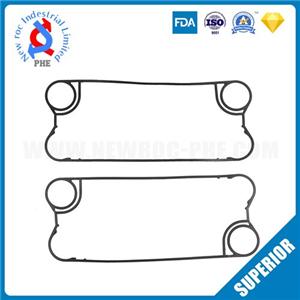9 Tips For Plate-and-Frame Heat Exchangers-Check Compatibility
TIP 2: Plate Heat Exchanger Check Compatibility
Check with your manufacturer to ensure chemical compatibility among the heat exchanger components and your process liquids as well as any possible cleaning solutions. An overwhelming number of Plate Heat Exchangers contains 316 stainless steel plates; 316 stainless is compatible with and corrosion resistant to many chemicals commonly found in processing plants. One chemical that is not friendly to 316, however, is chloride. Chloride's effect on 316 stainless steel is temperature related. A rule of thumb for chloride's compatibility with 316 is as follows: 180 ppm (parts per million) at 122oF ( 50oC), 120 ppm at 170oF (77oC), and 50 ppm at 212oF (100oC). Some manufacturers use a 316 stainless steel with a higher nickel content, which will be more resistant to chloride, but it is wise to check with them before Implementing any chemical change.
Plate-and-frame heat exchangers commonly are used in conjunction with cooling towers. The heat exchanger should be designed for your needs and the water treatment chemicals being used to treat the tower water. If you are thinking of switching to more aggressive chemicals to remedy a problem such as algae within the cooling tower, check with the heat exchanger manufacturer to confirm its compatibility with the plates and gaskets.
Another typical situation occurs in the food industry, where it is a common practice to clean-in-place (CIP) the unit. This involves circulating a caustic cleaning solution throughout the system. Again, make certain that the cleaning solutions you use are compatible with the heat exchanger plates and gaskets.




